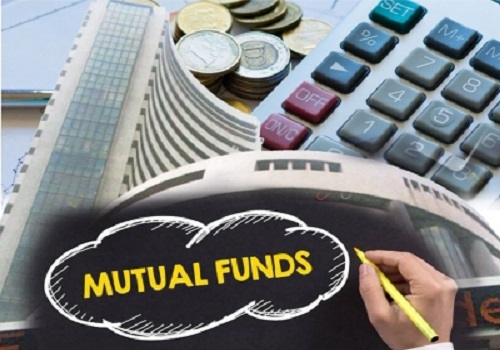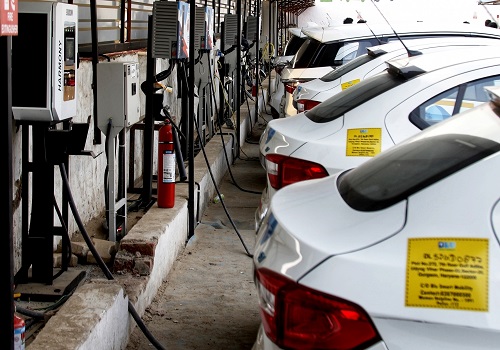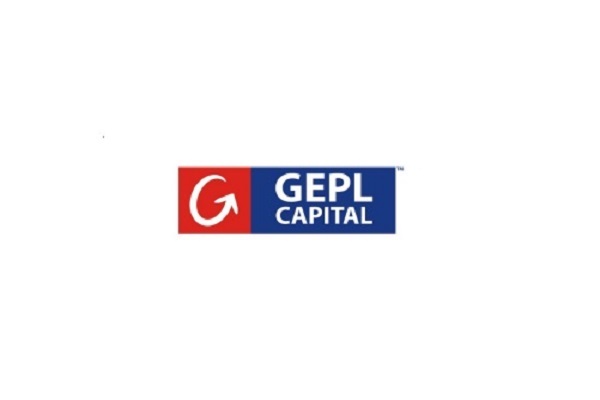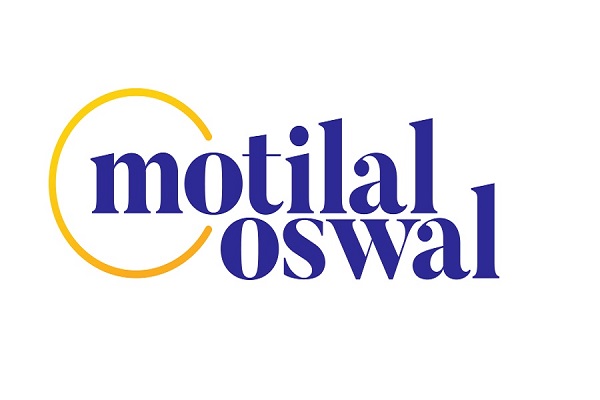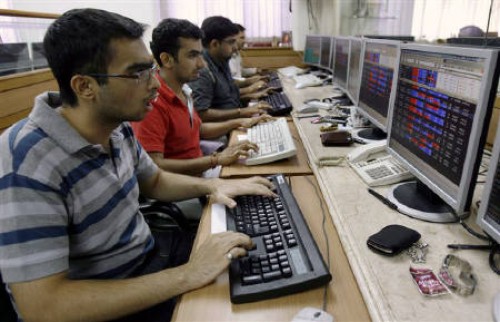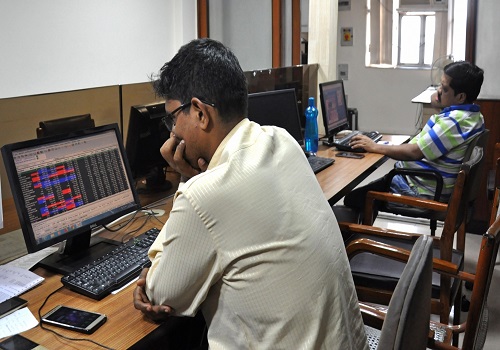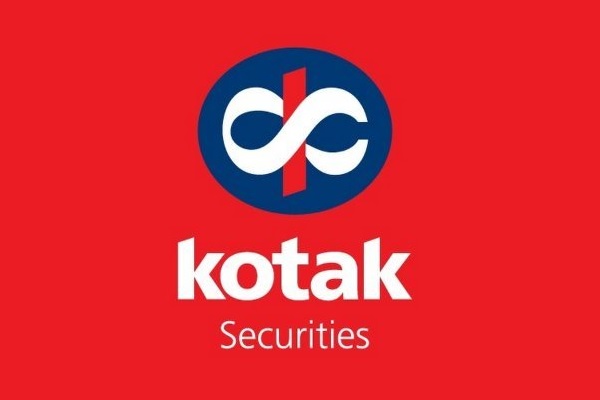Gold trading range for the day is 94390-99110 - Kedia Advisory

Gold
Gold prices surged by 3% yesterday, settling at 97,491, as demand for safe-haven assets intensified following President Donald Trump’s unexpected tariff threats. Trump’s announcement of a 100% tariff on foreign-produced movies and a forthcoming plan to impose pharmaceutical tariffs heightened market uncertainty, prompting investors to flock to gold. Attention now turns to the U.S. Federal Reserve’s policy meeting, where the central bank is widely expected to maintain current interest rates despite pressure from Trump to initiate cuts. In India, gold swung back into premium territory for the first time in five months, supported by festive demand and a retreat from record-high prices. Indian dealers shifted from offering discounts of up to $80 per ounce last week to charging a $3 premium by week's end. Similarly, premiums remained strong in China, ranging between $34 and $48 per ounce, although slightly lower than last week. Hong Kong and Singapore saw premiums of up to $2.50, while Japan witnessed flat to marginal premium pricing. Globally, gold demand rose 1% year-on-year to 1,206 metric tons in Q1 2025, driven by a staggering 170% increase in investment flows, notably into gold ETFs and bars. While bar and coin demand in China hit a 12-year high, global coin investment dropped 32%. Technically, the market is witnessing fresh buying interest, with open interest increasing by 2.36% to 15,240. Gold is currently finding support at 95,940, with a break below likely testing 94,390. On the upside, resistance is seen at 98,300, and a move above this level could lead prices toward 99,110.
Trading Ideas:
* Gold trading range for the day is 94390-99110.
* Gold rose as President Donald Trump's new tariff threat spurred demand for safe-haven assets.
* President Trump opened a new front in his trade war, saying movies produced outside the U.S. would face a 100% tariff.
* Investors are now awaiting the Federal Reserve's policy decision and speeches by several Fed officials due this week.
Silver
Silver prices climbed by 2.41% yesterday to settle at 96,701, driven by renewed safe-haven demand amid persistent global trade tensions. The market reacted to U.S. President Donald Trump’s remarks indicating no scheduled talks with Chinese President Xi Jinping, while hinting at a reduction in the hefty 145% tariff on Chinese goods. Trump also introduced a 100% tariff on foreign-produced films and teased potential tariffs on pharmaceuticals, fueling market anxiety and supporting silver prices. Focus now shifts to the upcoming U.S. Federal Reserve policy meeting, with investors watching closely for Fed Chair Jerome Powell's commentary, especially amid rising political pressure and economic uncertainty. Fundamentally, the silver market remains underpinned by strong industrial demand and a structural supply deficit. For the fifth consecutive year, silver is forecast to record a supply deficit, narrowing by 21% to 117.6 million troy ounces in 2025. Total silver demand is expected to stay broadly stable at 1.20 billion ounces, with industrial fabrication set to hit a record high of over 700 million ounces, thanks to growth in green technology and industrial applications. Physical investment demand is projected to grow by 3%, led by improved interest in Western markets. Technically, silver is experiencing short covering, with a 15.7% drop in open interest to 16,654 as prices rose 2,277. Key support lies at 95,770, with further downside potential to 94,840. Resistance is seen at 97,260, with a break above opening the door to 97,820.
Trading Ideas:
* Silver trading range for the day is 94840-97820.
* Silver surged as persistent trade-related uncertainty boosted renewed demand for safe-haven assets.
* US President Donald Trump’s stated he has no plans to speak with Chinese President Xi Jinping this week
* Trump announced a new 100% tariff on foreign-produced films and hinted at upcoming levies on pharmaceuticals
Crude oil
Crude oil prices surged by 3.7% yesterday, settling at 5,011, driven by escalating geopolitical tensions in the Middle East and concerns over supply dynamics. The market reacted strongly to Israel’s air strikes on Yemen’s Hodeidah port and a cement factory, launched in retaliation to missile attacks on its main airport by Iranian-backed Houthi forces. These developments have reignited fears of regional supply disruptions, lending upward pressure to crude prices. Adding to the volatility, OPEC+ announced it would accelerate output hikes for a second consecutive month, raising production by 411,000 barrels per day (bpd) in June as part of a broader plan to gradually restore 2.2 million bpd in voluntary cuts. Saudi Arabia has also warned of further increases should member nations exceed their output quotas. While these supply additions could weigh on prices, they are offset by growing fears of weaker demand amid trade tensions and slower global economic growth. In the U.S., crude output rose modestly in February to 13.16 million bpd, with Texas leading the gains. However, rail shipments declined, reflecting logistical shifts. Meanwhile, crude inventories fell by 2.696 million barrels, contrary to expectations of a build, supporting a bullish tone. Technically, the market is undergoing short covering, with open interest down 18.69% to 17,444 as prices gained 179. Crude is getting support at 4,913, with further downside potential to 4,815. Resistance lies at 5,081, and a break above could push prices toward 5,151.
Trading Ideas:
* Crudeoil trading range for the day is 4815-5151.
* Crude oil rose amid renewed tensions in the Middle East after Israel carried out air strikes on Yemen's Hodeidah port.
* OPEC+ decision to accelerate its output hikes for a second straight month.
* Total U.S. crude oil production rose slightly in February as Texas and New Mexico reversed recent declines and pumped more barrels.
Natural gas
Natural gas prices declined by 2.63% yesterday, settling at 292.1, pressured by forecasts indicating weaker demand over the next two weeks and reduced flows to U.S. LNG export facilities. Market sentiment was further dampened by unconfirmed speculation that Freeport LNG's 2.1 billion cubic feet per day (bcfd) export plant in Texas may have shut down, raising concerns about a temporary dip in export volumes. Additionally, warmer-than-average weather across the Lower 48 states through May 21 is expected to reduce heating demand, contributing to the bearish momentum. On the supply side, U.S. natural gas output has declined to 103.6 bcfd so far in May from April’s record high of 105.8 bcfd. Notably, daily output dropped by around 4.8 bcfd since mid-April, hitting a preliminary 10-week low of 102.6 bcfd. Despite this decline, gas stockpiles remain healthy, standing at 2.041 trillion cubic feet—1% above the five-year average and 17.6% higher year-over-year. The latest storage build of 107 bcf was the largest in two years, reflecting robust production and mild weather conditions. Looking ahead, the U.S. Energy Information Administration projects record highs in both production and demand for 2025. Technically, the market is under long liquidation, with open interest down by 9.94% to 10,550 as prices fell 7.9. Natural gas is finding support at 285, with further downside likely to 277.8. On the upside, resistance is seen at 303.6, and a break above that could push prices toward 315.
Trading Ideas:
* Naturalgas trading range for the day is 277.8-315.
* Natural gas fell on forecasts for weaker demand and rumors of Freeport LNG plant shutdown.
* Production has fallen by 2.8 bcfd over the past five days to a two-month low of 102.6 bcfd on Friday.
* LNG exports hit a record average of 16.0 bcfd in April, driven by increased flows to the under-construction Plaquemines facility.
Copper
Copper prices edged higher by 1.03% yesterday, settling at 851.15, supported by renewed optimism over potential U.S.-China trade negotiations and tightening inventory levels in China. Although President Donald Trump clarified he has no immediate plans to speak with Chinese President Xi Jinping, his openness to reduce the steep 145% tariff on Chinese goods offered markets a glimmer of hope. China, for its part, signaled a willingness to resume talks, provided unilateral tariffs are lifted. Broader trade developments involving India, Japan, and South Korea are also being monitored closely by investors for their potential influence on copper demand. Fundamentally, copper prices are finding support from shrinking inventories in China. The Shanghai Futures Exchange reported a 23.5% drop in copper stockpiles from the previous week, highlighting tighter domestic supply. However, supply pressures persist globally, as ample ore output from South America and rising U.S. inventories raise concerns about a possible surplus. The International Copper Study Group (ICSG) recently doubled its surplus forecast for 2025 to nearly 300,000 tonnes. Despite these pressures, the refined copper market showed a narrowing surplus of 61,000 metric tons in February, compared to 90,000 tons in January, offering some fundamental support. Technically, the market is in short covering mode, with open interest falling by 0.71% to 6,950. Copper has support at 844.9, with a break below potentially testing 838.6. Resistance is seen at 855.2, and a move above could push prices to 859.2.
Trading Ideas:
* Copper trading range for the day is 838.6-859.2.
* Copper rose on hopes that the US and China could start trade negotiations soon amid efforts to ease tariff tensions.
* Copper prices received further support from falling inventories in China, signaling tighter supply conditions.
* President Trump said that he has no plans to speak with President Xi Jinping this week.
Zinc
Zinc prices edged up by 0.43% yesterday to settle at 246.85, supported by optimism surrounding potential U.S.-China trade talks, although broader economic concerns limited gains. Positive sentiment emerged after both countries signaled some willingness to engage, despite recent tariff escalations. China imposed duties of up to 125% on U.S. goods and expanded its export-restriction list, while the U.S. raised tariffs to 145% and hinted at further levies targeting select metals. On the supply front, expectations of a mining rebound in 2025 are building, with new capacity expected from Russia and the Democratic Republic of Congo. This has already started pushing treatment charges higher, a reversal from late 2024 when Chinese smelters grappled with negative margins. The International Lead and Zinc Study Group (ILZSG) projects a surplus in the global refined zinc market this year, with output rising 1.8% to 13.73 million tons—outpacing the 1% demand growth forecast. Mined zinc production is expected to increase by 4.3% to 12.43 million tons after several years of contraction due to mine closures. In China, refined zinc output jumped nearly 14% month-on-month and over 4% year-on-year in March, beating expectations. Technically, the zinc market is undergoing short covering, with open interest falling by 6.01% to 2,938 as prices gained 1.05. Zinc is finding support at 245.6, with further downside risk to 244.3. On the upside, resistance lies at 248.8, and a move beyond that could lead to testing 250.7.
Trading Ideas:
* Zinc trading range for the day is 244.3-250.7.
* Zinc gains amid signs of U.S.-China trade talks boosted sentiment.
* However, lingering concerns about the broader economic impact from trade disputes limited gains.
* In a tit-for-tat tariff escalation, China imposed duties of up to 125% on U.S. goods and expanded its export-restriction list.
Aluminium
Aluminium prices eased by 0.22% yesterday to settle at 231.9, as persistent global trade tensions continued to weigh on market sentiment. While U.S. Treasury Secretary Scott Bessent defended President Trump’s steep 145% tariffs—asserting long-term benefits from associated tax reforms—the immediate economic impact remains negative. The U.S. economy contracted in the first quarter for the first time in three years, as importers rushed to front-load shipments ahead of tariff hikes. Meanwhile, China’s Commerce Ministry acknowledged evaluating Washington’s offer to restart trade talks, providing a slight glimmer of hope for diplomatic progress. Fundamentals, however, remain mixed. Aluminium inventories at the Shanghai Futures Exchange fell by 1.5% from last week, signaling tighter domestic supply. In Japan, stocks at major ports also declined by 1.2% in March. Still, output growth is putting pressure on prices. Global primary aluminium production rose 2.3% year-on-year in March to 6.227 million tonnes, while China’s Q1 output rose by 2.6% year-on-year to 11.07 million tonnes, nearing the government’s 45-million-ton annual production cap. Exports from China grew 17% in the first ten months of the year, reflecting robust overseas demand. Technically, the market is under long liquidation, as open interest dropped by 0.46% to 5,181 while prices slipped 0.5. Aluminium finds support at 230.4, with further downside potential to 228.9. Resistance is pegged at 233.5, and a move above that could push prices toward 235.1.
Trading Ideas:
* Aluminium trading range for the day is 228.9-235.1.
* Aluminium dropped amid lingering concerns about the broader economic impact from trade disputes.
* U.S. Secretary Bessent defended Trump's tariffs, emphasizing that his broader agenda including tax cuts would eventually lead to long-term economic growth.
* The first quarter saw the U.S. economy shrink for the first time in three years
Cottoncandy
Cottoncandy prices rose by 0.65% yesterday to settle at Rs.54,500, driven by expectations of a tighter domestic supply outlook. The Cotton Association of India (CAI) has revised its crop estimate downward by 4 lakh bales to 291.30 lakh bales (of 170 kg each), citing weaker production in Maharashtra. This adjustment follows updated reports from state associations and highlights the continued pressure on India’s cotton output for the 2024–25 season. Total cotton supply up to March, including 25 lakh bales of imports and 30.19 lakh bales of opening stock, is estimated at 306.83 lakh bales. However, despite this bullish supply-side data, upside momentum is capped. Mills remain well-stocked, with limited immediate buying needs. Stocks at the end of March are estimated at 127.83 lakh bales, including 100.83 lakh bales held by CCI, trade, and state federations. Cotton exports are projected to fall sharply to 16 lakh bales, down from last year’s 28.36 lakh bales, while imports are expected to more than double to 33 lakh bales due to further anticipated crop shrinkage. Globally, the U.S. balance sheet shows a minor reduction in exports and a corresponding increase in ending stocks. World cotton production is also revised downward slightly, with lower output in Argentina and Africa outweighing gains in China. Technically, the cottoncandy market is under short covering, with no change in open interest. Support lies at Rs.54,500 and a drop below could see prices test Rs.54,490, while resistance is at Rs.54,510, with further gains possible up to the same level.
Trading Ideas:
* Cottoncandy trading range for the day is 54490-54510.
* Cotton prices gained as CAI expects a shrinkage in the domestic crop
* CAI has estimated the total cotton supply till the end of March including the imports at 306.83 lakh bales.
* Cotton exports for the 2024-25 season are pegged at 16 lakh bales, lower by 12.36 lakh bales
* In Rajkot, a major spot market, the price ended at 26027.35 Rupees dropped by -0.2 percent.
Turmeric
Turmeric prices declined by 0.96% to settle at Rs.13,780, largely pressured by increased arrivals and weak export demand. Daily arrivals surged to approximately 57,500 quintals, nearly doubling from 29,860 quintals in the previous session, which added to the downward price momentum. However, the downside was limited by ongoing concerns over lower production estimates and crop quality issues. Although the area under turmeric cultivation has increased by 10% to 3.30 lakh hectares for this season, yields are expected to be 10–15% lower due to untimely rains, particularly impacting key growing regions like Nanded, where reports of small rhizomes and crop rots have emerged. Despite the recent dip, export performance remains strong, providing underlying support. Turmeric exports during April–January 2025 rose by 12.93% to 1.49 lakh tonnes compared to 1.32 lakh tonnes during the same period last year. However, on a monthly basis, January exports dropped by 23.17% from December, though they were up 12.18% year-on-year. On the import side, volumes rose sharply by 70.13% year-on-year for the April–January 2025 period, though January imports fell by over 43% from December and nearly 65% year-on-year, possibly due to weaker domestic demand and sufficient local availability. Technically, the market is witnessing long liquidation, with open interest plunging by 30.39% to 5,910 as traders cut positions amid the price drop of Rs.134. Turmeric now has support at Rs.13,544, with a breach possibly pushing it down to Rs.13,310. Resistance is seen at Rs.13,980, and a move above that could take prices toward Rs.14,182.
Trading Ideas:
* Turmeric trading range for the day is 13310-14182.
* Turmeric prices ended with losses mainly due to increased arrivals and owing to weak export enquiries.
* Total arrivals rose to around 57,500 quintals, up significantly from 29,860 quintals in the previous session.
* However downside seen limited as persistent concerns about low arrivals and lower production estimates.
* In Nizamabad, a major spot market, the price ended at 14298.15 Rupees dropped by -0.72 percent.
Jeera
Jeera prices declined by 2.49% to settle at Rs.21,565, weighed down by weak domestic buying and subdued export demand. The recent price fall is largely attributed to the end of the retail buying season and inactivity from overseas buyers. Additionally, comfortable supplies and tepid export interest amid adequate carryover stocks added pressure to the market. Daily arrivals in major mandis rose to 32,900 bags from 28,000 bags in the prior session, contributing further to the oversupply situation. The delayed sowing of the new jeera crop in Gujarat and Rajasthan, due to unfavorable weather, has affected the market outlook. Despite this, overall production this season is expected to remain at similar levels as last year, thanks to favorable crop conditions and good sowing progress. While farmers still hold around 20 lakh bags of cumin, only 3–4 lakh bags are expected to be traded by the season's end, leaving a significant carryover stock of approximately 16 lakh bags, which may keep prices under pressure in the near term. On the trade front, jeera exports during April–January 2025 surged by 66.98% to 182,167.70 tonnes compared to the same period last year. However, monthly exports in January dipped by 5.50% from December. Technically, the market is under long liquidation with a 10% drop in open interest to 3,483, indicating traders reducing their positions. Jeera has immediate support at Rs.21,280, with further downside potential to Rs.20,980. On the upside, resistance is seen at Rs.22,000, and a break above could take prices to Rs.22,420.
Trading Ideas:
* Jeera trading range for the day is 20980-22420.
* Jeera prices declined due to lower buying from domestic buyers and subdued export demand.
* Total arrivals in major mandis rose to 32,900 bags from 28,000 bags in the previous session, increasing supply side pressure.
* Traders attributed the fall mainly to the conclusion of the retail season and continued inactivity on the part of foreign buyers.
* In Unjha, a major spot market, the price ended at 22503.5 Rupees dropped by -0.64 percent.
Views express by all participants are for information & academic purpose only. Kindly read disclaimer before referring below views

